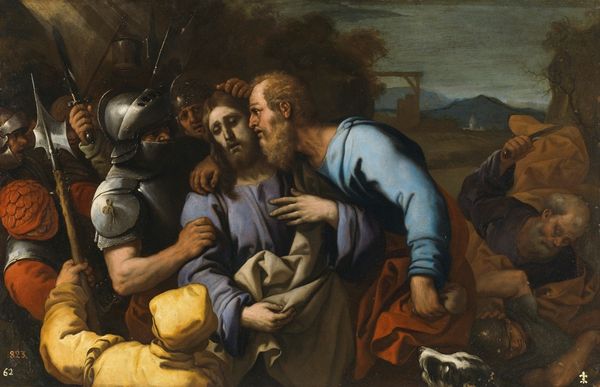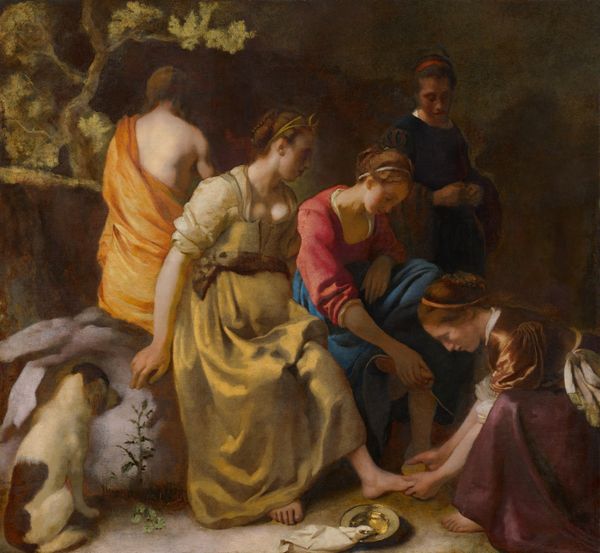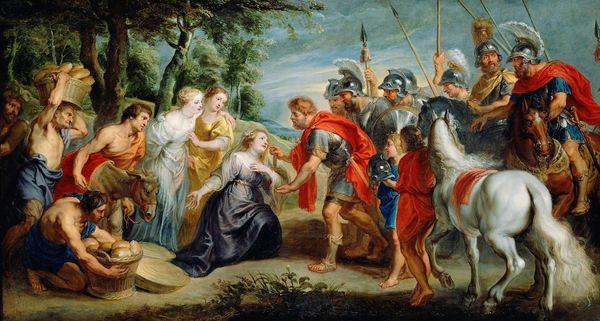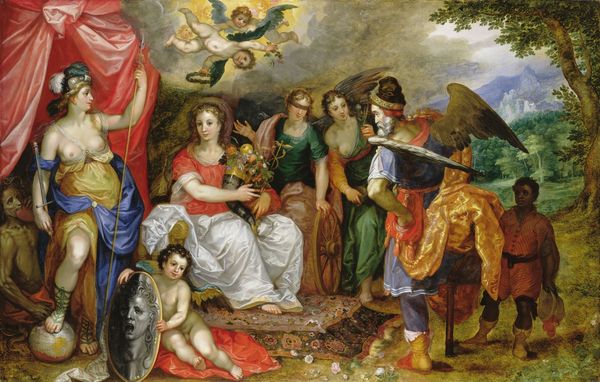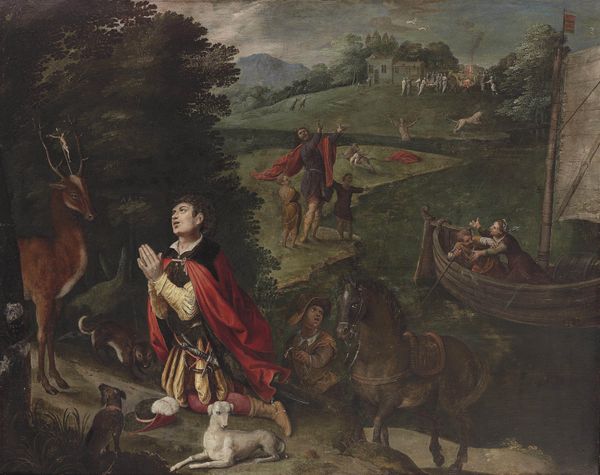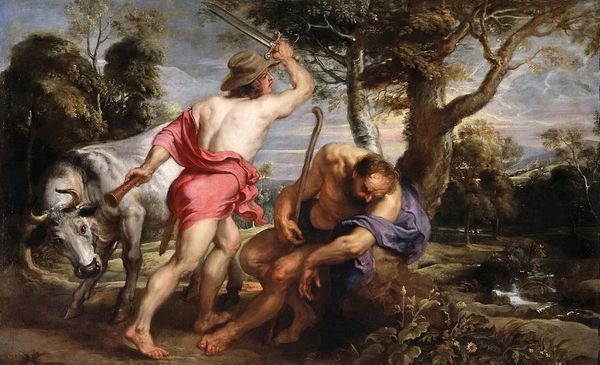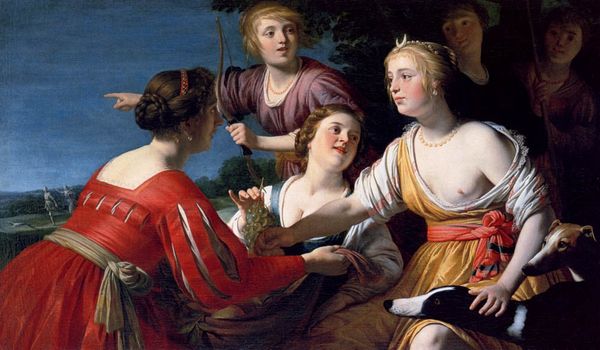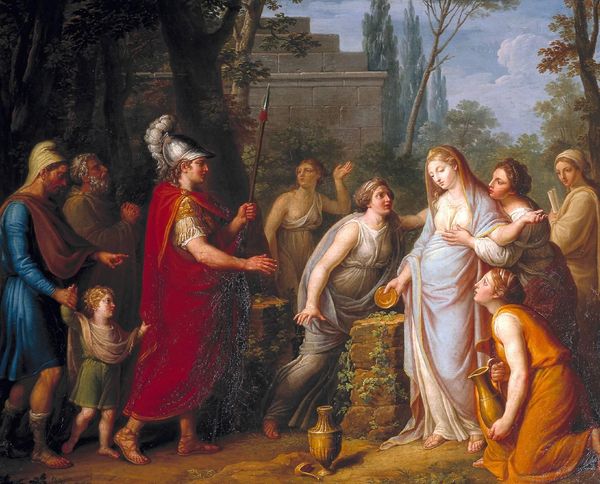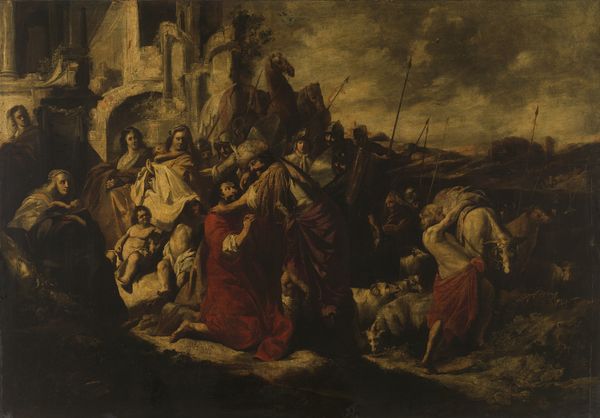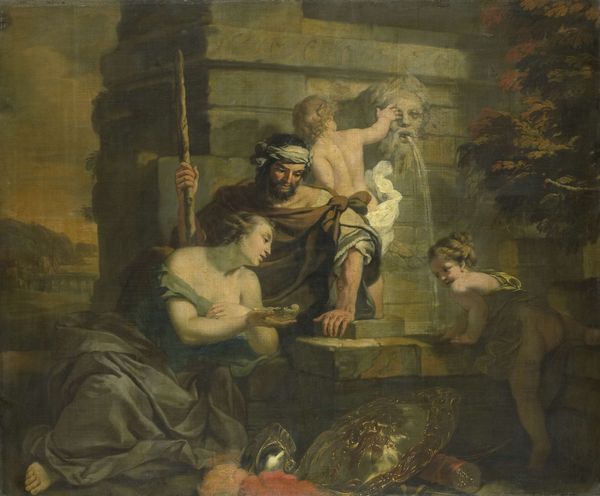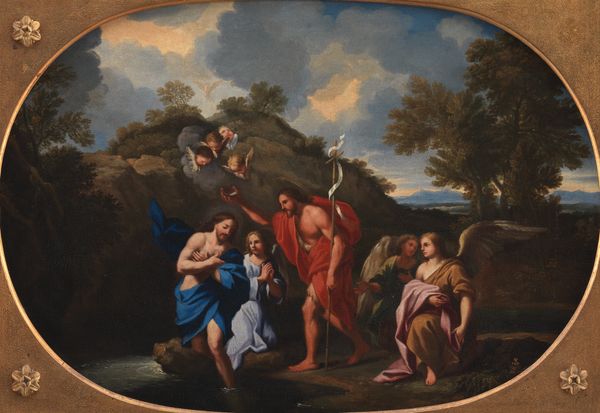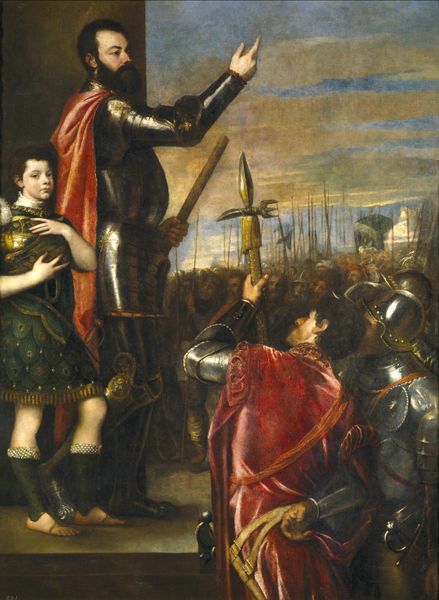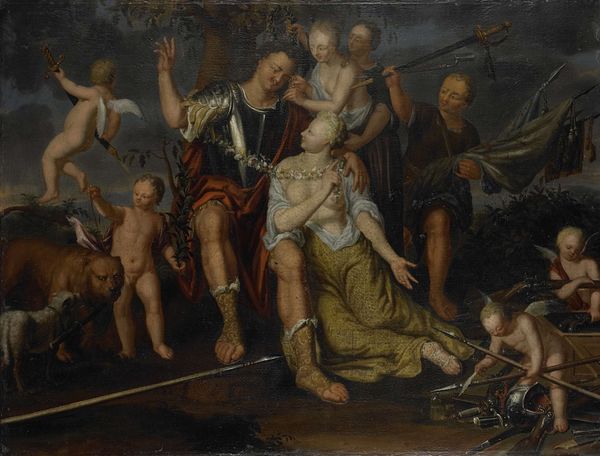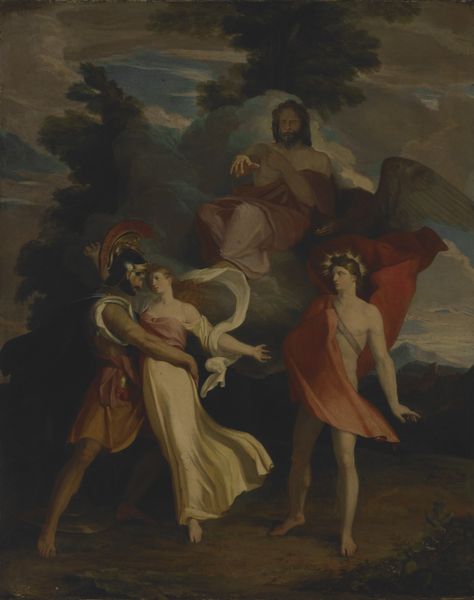
painting, oil-paint
#
portrait
#
baroque
#
painting
#
oil-paint
#
landscape
#
group-portraits
#
genre-painting
Copyright: Public domain
Curator: This striking artwork, "The Four Eldest Children of the King and Queen of Bohemia," was completed in 1631 by Gerard van Honthorst, utilizing oil paint on canvas. It is an intriguing group portrait of children rendered in landscape. What is your initial impression? Editor: Hmm, almost a stage production. The forest backdrop feels a bit like a painted curtain, and those bright costumes—particularly the draped fabrics—pop like the players are lit for drama. Very posed and perhaps even a tad awkward. Curator: There’s definitely an artificiality there, but one loaded with meaning. These aren't simply children at play; they are young royalty deliberately presented within a carefully constructed framework. Observe the clear symbolic roles in attire. For instance, that central figure with the moon on her brow evokes Diana, goddess of the hunt. Editor: Yes, but what a serious Diana! And burdened, I think. You mentioned "symbolic roles," and perhaps that’s it. All these symbols...bows and arrows and dead hares. Are these the masks that they wear? Because you can't look away from that air of performance. It's sad and perhaps too honest to be pure portraiture. Curator: Perhaps. But the dogs are an interesting counterpoint. Look at how dynamic and free they appear, particularly the white one stretching toward us, contrasting with the rather rigid postures of the children. Editor: Absolutely. They’re so much more *alive*, so fully present in the moment, as if to remind us that there's an essential spirit, maybe the natural self that wants to be liberated from its duties. Or maybe that is just wishful thinking? Curator: It’s easy to project desires onto art. What matters here, though, is how Honthorst uses these established visual codes—the attire, the props—to comment on childhood, nobility, expectation... And perhaps loss? Remember, this family was in exile, and Honthorst himself had enjoyed significant influence in their court. Editor: It's all so incredibly potent, isn't it? An intriguing reminder that every portrait—particularly a state portrait—is a loaded proposition, a construct full of unspoken desires and historical baggage. It's certainly much more profound than I first considered. Curator: Agreed. The weight of history infuses this work, enriching its complexity with multiple possible meanings that only deepen over time.
Comments
No comments
Be the first to comment and join the conversation on the ultimate creative platform.
